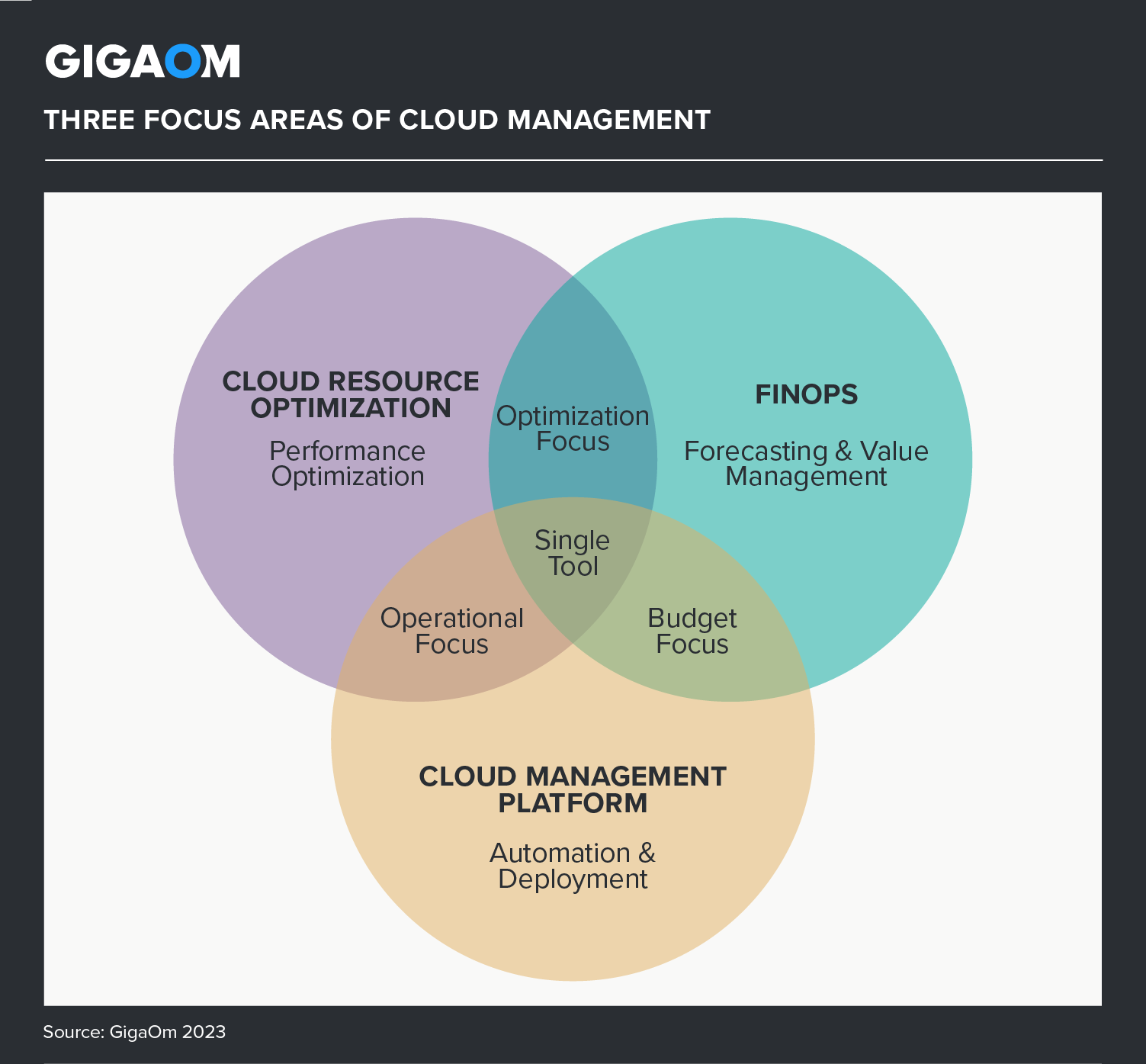Table of Contents
- Summary
- Cloud Resource Optimization Primer
- Report Methodology
- Decision Criteria Analysis
- Evaluation Metrics
- Key Criteria: Impact Analysis
- Analyst’s Take
- Methodology
- About Matt Jallo
- About GigaOm
- Copyright
1. Summary
With today’s IT environments composed of automated components that can deploy in minutes across private and public cloud infrastructures, the need to take control of these components continues to challenge organizations, giving rise to solutions that seek to manage and optimize cloud resources.
As Figure 1 shows, solutions that deal with the creation and management of cloud assets mostly can be broken down into three focus areas:
- Cloud management platforms (CMPs): Automation and deployment
- FinOps solutions: Budgeting, forecasting, and value management
- Cloud resource optimization solutions: Performance optimization
Cloud management and FinOps are covered in previous GigaOm reports (links above); this report focuses on cloud resource optimization.
While each of these focus areas may provide limited features that cross into an adjacent area, it’s more common to see solutions concentrating on one area and providing integrations with its neighbors.

Figure 1: Three Focus Areas of Cloud Management
Cloud resource optimization deals with the measurement, optimization, and reconfiguration of cloud assets that have already been deployed and are incurring costs for the organization. These solutions should address the question, “How much do we need?” and identify the ways resources could be better balanced for more effective cost or performance (or both). Solutions in this space should also play an active role within the IT planning phase (to better forecast resource needs) and in the overall capacity management conversation of an IT operations team within an organization.
This GigaOm Key Criteria report details the capabilities (table stakes, key criteria, and emerging technologies) and non-functional requirements (evaluation metrics) for selecting an effective cloud resource optimization solution. The companion GigaOm Radar report identifies vendors and products that excel in those capabilities and metrics. Together, these reports provide an overview of the category and its underlying technology, identify leading cloud resource optimization offerings, and help decision-makers evaluate these solutions so they can make a more informed investment decision.
How to Read this Report
This GigaOm report is one of a series of documents that helps IT organizations assess competing solutions in the context of well-defined features and criteria. For a fuller understanding, consider reviewing the following reports:
Key Criteria report: A detailed market sector analysis that assesses the impact that key product features and criteria have on top-line solution characteristics—such as scalability, performance, and TCO—that drive purchase decisions.
GigaOm Radar report: A forward-looking analysis that plots the relative value and progression of vendor solutions along multiple axes based on strategy and execution. The Radar report includes a breakdown of each vendor’s offering in the sector.